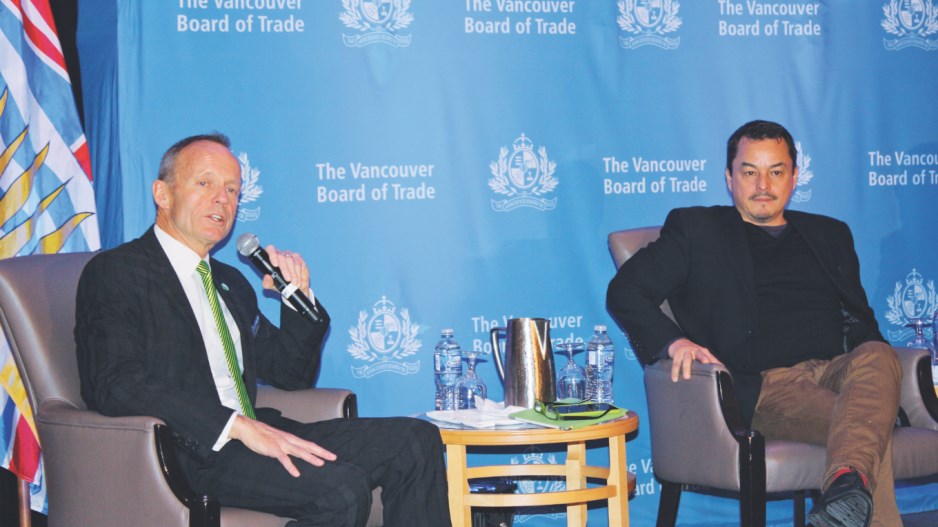“Canada’s greenest refinery” would cost $10 billion to build but would generate $1 billion a year in profits, says former Conservative cabinet minister Stockwell Day, chairman of the advisory committee for Pacific Future Energy.
That’s half of what David Black’s Kitimat Clean oil refinery would cost to build, according to the findings of a Hatch Ltd. engineering and feasibility study released by Black last week.
The two refinery proposals have a lot in common.
Their main selling points are that they would avoid the environmental damage that a bitumen spill would cause on B.C.’s coast because refined fuels such as diesel and gasoline evaporate.
Both project proponents believe that will go a long way to securing the kind of social licence with First Nations and the general public that pipelines alone have had a hard time getting in B.C.
To help sell the project to First Nations in B.C., Pacific Future Energy has recruited two high-profile former First Nations political leaders as directors – Shawn Atleo and Ovide Mercredi, both of whom are former Assembly of First Nations chiefs.
Unlike the pipelines proposed by Enbridge Inc. (TSX:ENB) and Kinder Morgan Inc. (NYSE:KMI), which are intended to feed refineries overseas, both B.C. refinery proposals would provide more jobs for British Columbians – about 3,000 direct permanent jobs in Kitimat Clean’s case, its backers say.
At a presentation to the Vancouver Board of Trade last week, Day said the refinery proposed for Prince Rupert would use cutting-edge technology to reduce carbon emissions.
“We’re talking about near-zero emissions,” Day said.
The refinery would cost $10 billion and would need a new pipeline, which would add another $6 billion to $8 billion to the project’s cost.
That’s close to the $13 billion that Black’s refinery was originally projected to cost when first proposed in 2012.
But last week, Black said the Hatch study raises that estimate to $22 billion. The project would also require another $11 billion to build a new pipeline and tanker fleet.
The Kitimat Clean refinery would be more expensive than a conventional refinery because the technology it would use would reduce by half the amount of greenhouse gases produced in a traditional refinery.
Asked how Pacific Future Energy could build a near-zero-emission refinery for half the cost of Kitimat Clean, Day said the production capacity would be 250,000 barrels per day – slightly more than half of Kitimat Clean’s daily production of 460,000 barrels.
“The engineering groups worldwide that have done projects like this … have drilled down into the numbers,” Day said. “They say that our economic model stands up.”
Day said declining oil prices would work to the project’s advantage.
“For us it means that the raw product that we’re going to be getting per barrel is going to cost less,” Day said.
Day said that based on an estimated 250,000 barrels per day of refined petroleum at $25 per barrel, the refinery’s projected profits are $1 billion a year EBITDA (earnings before interest, taxes, depreciation and amortization).




